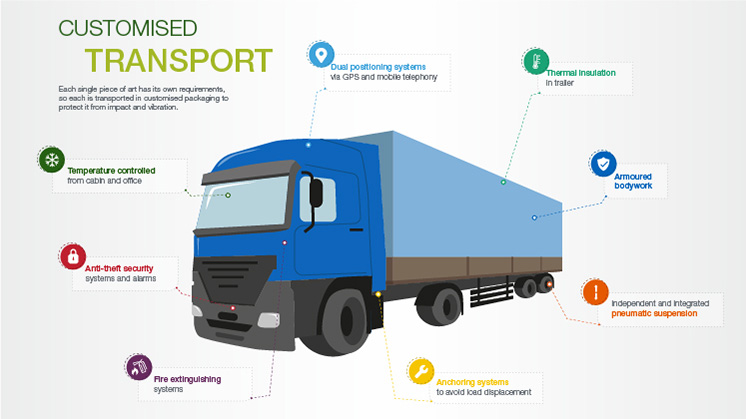ART TRANSPORTATION
As delicate as the transport of organs
Bringing together the pieces to be featured at an exhibition is a very sensitive process. It involves valuable and unique works of art, with the packaging and transportation of each the responsibility of specialist companies and professionals.
"If there is anything that even vaguely resembles what we do, it is the transport of organs", explains Borja Zabala, business director of EDICT Transporte y Gestión de Obras de Arte External link, opens in new window.. And not without reason, since every picture or sculpture leaving a museum to form part of a temporary exhibition requires constant and personalised attention, not to mention the overseeing all aspects of security during the transportation process.
External link, opens in new window.. And not without reason, since every picture or sculpture leaving a museum to form part of a temporary exhibition requires constant and personalised attention, not to mention the overseeing all aspects of security during the transportation process.
This company was contracted to bring together more than 200 works of art on the 25th floor of the Iberdrola Tower in Bilbao. The works include the documents, maps, costumes and miniatures that made up Memory Regained, a show that posed a significant logistical challenge with the process involving packaging, transport, handling, storage and assembly.Luckily this is a challenge which Iberdrola is well positioned to face: the company is a regular donor of works from its art collection External link, opens in new window. for shows and exhibitions organised by other museums and institutions.
External link, opens in new window. for shows and exhibitions organised by other museums and institutions.
Secure transport of art works. Video voice transcription (Spanish version) [PDF]
The importance of transport
Every piece of art has its own requirements so each is transported in customised packaging to protect it from impact and vibration. The trucks used to transport artworks are equipped with many technical enhancements, including the following notable features:

SEE INFOGRAPHIC: Customised transport [PDF]
The storage areas are also surrounded by a variety of security features: 24 hour on-site presence and video surveillance, secure temperature controlled rooms, systems connected to a security company and the police, and a fire control system including seismic movement detection.
No delays at customs
Whenever works of art are required to cross borders, the companies specialising in their transport take care of all the formalities: at airports, its staff has aircraft access to supervise loading and unloading, and at seaports they have a telematics connection with customs authorities, keeping paperwork and permits to a minimum.
They are also responsible for providing lodging, support and access authorisation for so-called art couriers, specialised staff sent by the artwork donor to validate transport and conservation conditions in situ.
Paintings from the Prado arriving at the Iberdrola Tower. Video voice transcription (Spanish version) [PDF]
When they have arrived at the gallery it is up to the exhibition curator to generate a discourse between the selected works. Each art piece becomes a word in a story being told to the spectator, witnessing history in an exciting way for the visitor, unaware of the valuable work performed by so many specialists.






